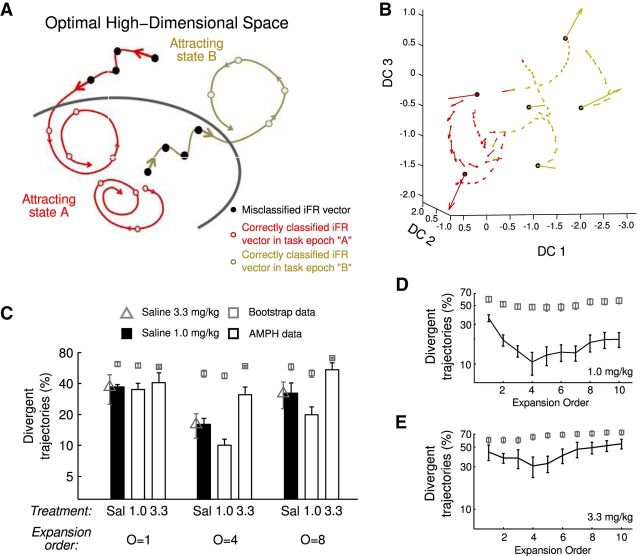Figure 7.
Attraction and divergence in expanded state spaces. A, Schema illustrating sections of trajectories both entering and exiting two putative task-epoch-specific attracting states. In this example, the SE is 40%, whereas the percentage of divergent trajectories is 0%. B, Projection onto the three maximal discriminant coordinates (DC) derived from the optimally expanded space from a SAL animal. Black circles mark points of transition from one task state to another. C, Percentage of neural trajectories that escape from an attractor-like state associated with an individual cognitive epoch (as defined by kernel-FDA; see Results) is reduced in optimally expanded spaces in the 1.0 mg/kg conditions but increased in the 3.3 mg/kg AMPH condition. Bidirectional and dose-dependent effects on trajectory convergence are observed when comparing SAL- and AMPH-treated animals (see Results). The percentage of divergent trajectories at each expansion order is shown for 1.0 mg/kg (D) or 3.3 mg/kg (E) treated animals (black lines) compared with block-permutation bootstrap data (gray boxes).

